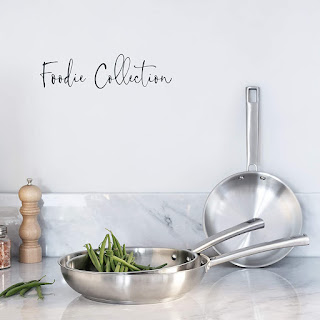How to clean a cast iron skillet? Useful tips
The cast iron pan is a product that if kept correctly can last forever! It is a ferrous material and therefore very resistant to both scratches and stains and also to falls.
This type of pan is perfect for preparing meat, especially roasts. If you have a passion for barbecue but don’t have one worthy of the name, the cast iron pan will be perfect for an almost equal effect.
This pan is also an excellent conductor of heat and will therefore be able to cook your food in the best possible way. It is heavier than the aluminum frying pan but the cooking quality justifies this small feature. Another small flaw that requires attention is the handle. Being also made of cast iron, it can get really hot, so always use a tea towel or a pot holder to handle it.
Furthermore, cast iron pans are not afraid of any temperature. Usually, frying pans should not be exposed to temperatures above 250 degrees, cast iron pans can reach this limit and even exceed it without problems.
The cast iron pan is very versatile because you can cook anything without problems, it’s cheap because it doesn’t cost more than a classic pan, around 20/25 euros.
Originally the cast iron pan is not non-stick but if you want such a bottom to cook in the healthiest way possible, you can treat the pan at home without difficulty. All you need to do is grease the bottom of the pan with rapeseed oil and then cook in the oven at 160/200 degrees for an hour or two, then leave to cool, and then dry. This way your cast iron friend will also be a non-stick!
How do you clean a cast iron skillet?
The material used may give you some cleaning concerns but there are many ways to keep the cast iron pan always in perfect condition.
- the first method is the traditional one: just rinse the pan after use with running water, remove the large leftovers of food, and then fill it with two or three inches of water. At this point, just place the pan on the stove and let the water come to a boil. With a spatula, scrape a little to remove the stubborn food residues while the water is boiling. Then throw away the dirty water, wipe the inside bottom of the pot with two damp napkins, and then grease the bottom with a little vegetable oil, making it uniform over the entire surface and edges with a sheet of kitchen paper. At this point, cleaning is finished, but remember to always leave the pot covered with a sheet of kitchen paper and in a dry place.
- the second method is very natural and suitable for rust stains. To put it into practice you will need a raw potato and some baking soda. It is necessary to cut the potato in half and cover the inner layer with a layer of bicarbonate. Now just rub the potato on the bottom and sides of the pan. If it gets too slippery just cut off the initial layer of the potato and continue. Once this procedure has been done, you may need to redo the oil treatment explained in the first method.
With cast iron pans it is necessary never to use detergents or soaps because the substances contained within them could compromise the bottom of the pan and expose it to external agents that would deteriorate it.
Furthermore, cleaning in the dishwasher or the use of abrasive sponges is not permitted, for the same reason.
Cast iron pans if treated in the way described above can last for many years. This material is very resistant but wear also affects him. So think carefully before throwing away a cast iron skillet. Compared to other materials, this can be reconditioned and easily brought back to its origins, every time the pan will be like new.







Comments
Post a Comment